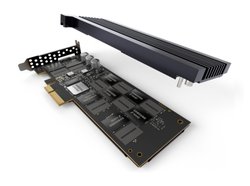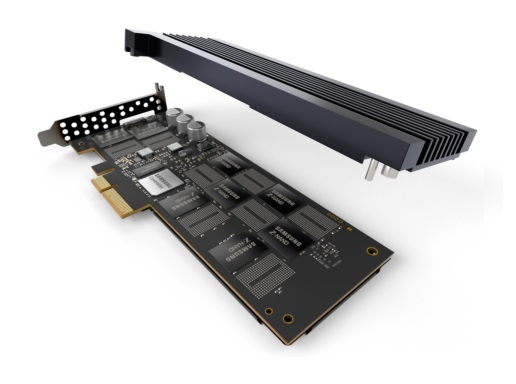
Jan. 30, 2018
By: Michael Feldman
Samsung Electronics has released its first-generation Z-SSD product, a high-performance solid state drive that is meant to compete with Intel’s Optane SSDs.
 According to the press release, the SZ985 Z-SSD is aimed at data-intensive workloads for “the most advanced enterprise applications including supercomputing for AI analysis.” Essentially, Z-SSDs and their Intel Optane counterparts are premium solid state drives that fit into a new category known as "storage class memory." In a nutshell, such memory is meant to act as a bridge between faster main memory (DRAM) and slower external storage (hard disks or flash-based SSDs).
According to the press release, the SZ985 Z-SSD is aimed at data-intensive workloads for “the most advanced enterprise applications including supercomputing for AI analysis.” Essentially, Z-SSDs and their Intel Optane counterparts are premium solid state drives that fit into a new category known as "storage class memory." In a nutshell, such memory is meant to act as a bridge between faster main memory (DRAM) and slower external storage (hard disks or flash-based SSDs).
Storage class memory is intermediate in both price and performance between these two tiers, and can serve as destination for “hot data.” Samsung says its Z-SSDs can be used for high-speed data cache and log processing, but also more generally for data-demanding applications associated with HPC, AI, data analytics, and IoT work.
Samsung claims random read performance of 750K IOPs, at 16us of latency, both of which are on par with Intel’s first-generation Optane drives, which were introduced in March of last year. However, the SZ985’s random write performance of 170K IOPs is about 70 percent slower than what the Optane drives can deliver.
As far as drive resilience goes, Samsung is claiming a mean time between failure (MTBF) of two million hours. The company also guarantees up to 30 drive writes per day for five years, which works out to 42 petabytes in aggregate. Again, that’s on par with what the Optane drives offer.
Underneath the covers, Z-SSDs combine a little bit of DRAM – 1.5GB in this case – along with Z-NAND. The nature of Z-NAND is something of a mystery, although Samsung has said the technology is based on its V-NAND architecture. V-NAND is Samsung’s implementation of 3D NAND, where the memory cells are stacked vertically to achieve higher density and greater performance. Samsung is already into its fourth-generation of V-NAND, which uses a 64-layer design, but there's no indication that the Z-SSDs are employing this level of technology.
“With our leading-edge 800GB Z-SSD, we expect to contribute significantly to market introductions of next-generation supercomputing systems in the near future, enabling improved IT investment efficiency and exceptional performance,” said Jinman Han, senior vice president, Memory Product Planning & Application Engineering at Samsung Electronics. “We will continue to develop next-generation Z-SSDs with higher density and greater product competitiveness, in order to lead the industry in accelerating growth of the premium SSD market.”
Samsung initially had 1TB, 2TB, and 4TB Z-SSD products slated for release over 2016 and 2017, which suggests it was more difficult to build these devices than they had originally thought. The first-generation products unveiled this week are available only in 800GB and 240GB capacities. Both will be officially launched at the International Solid-State Circuits Conference (ISSCC 2018), which will take place in San Francisco from February 11-15.
